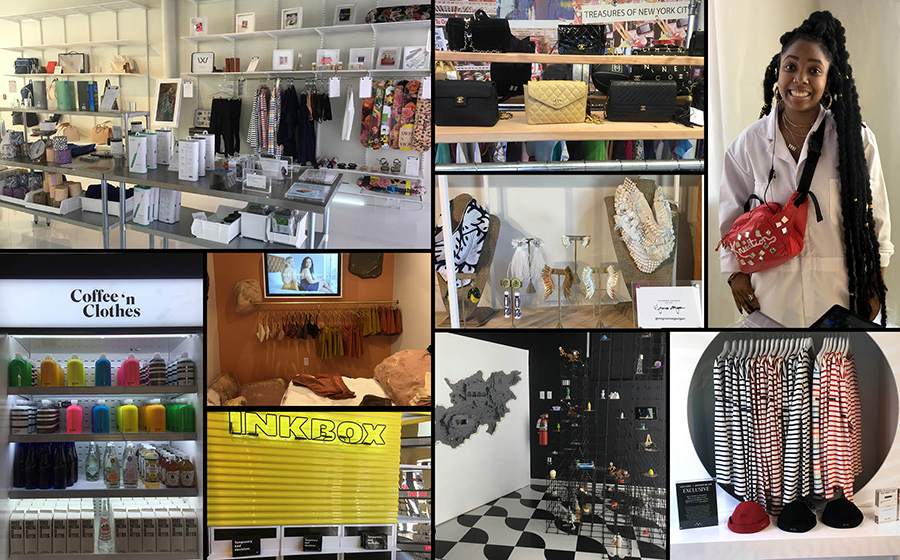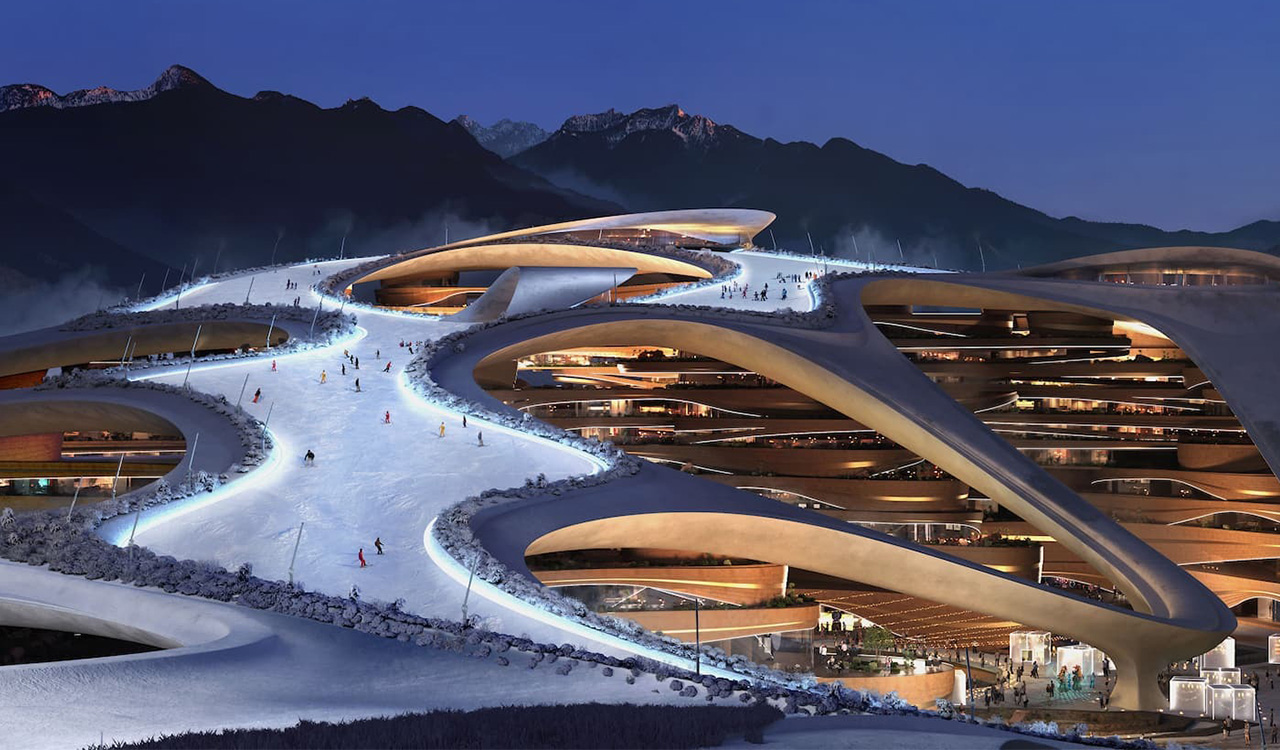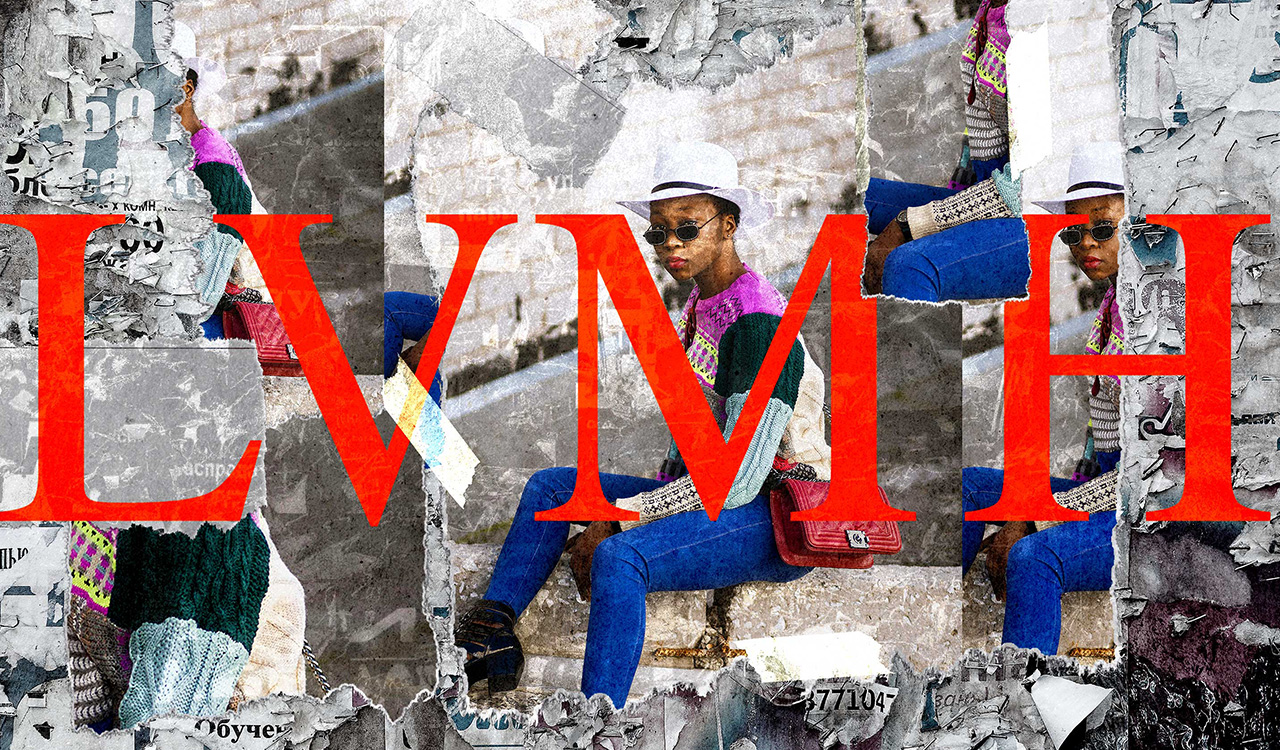First there was Sleep No More, an immersive production of Macbeth that redefines theater, staged in the multi-storied McKittrick Hotel on West 27th Street in Manhattan. It opened in 2011 and ever since, Venetian Carnival masked guests wander around the stage set on four cavernous floors, mostly lost and frequently confused, becoming the accidental audience of various scenes of Shakespeare\’s noir tragedy. It is fascinating and somewhat unsettling. The cast of actors transport you directly into the heart of the play, as you watch invisibly on the sidelines. Tickets cost $100 to $300 (there are dinner packages) and to date, thousands of people have experienced Sleep No More.
Then there\’s Meow Wolf, an immersive meandering art installation in Santa Fe that makes Disney look slick and disingenuous. An art collective\’s parallax version of an unfolding story, Meow Wolf has the spirited sense of humor of a walk through the looking glass for children of all ages. It\’s Burning Man indoors, full of outsider art crafted by the disruptors of the Santa Fe art scene. It has hit fans by storm since it opened in 2008 and Meow Wolf is now planning to open in Vegas, Denver and Washington DC, which might be the best pubic service possible for our government officials so under siege. Adult tickets cost $29 and over one million people have experienced Meow Wolf-Santa Fe has 83,000 residents.
Now there\’s Showfields, an immersive theatrical storytelling journey in a multi-storied building on Bond Street in lower Manhattan. This experience is neither strictly art nor theater, and according to the Showfields team, it is \”the first interactive experience bridging art and retail. Designed by an interdisciplinary team and a creative collective of founders, entrepreneurs, curators, architects, artists and scientists, the show bridges the gap between retail and experience.\” Showfields boasts an ambitious promise as \”the most interesting store in the world.\” That is a matter of debate, but in my opinion, it\’s an interesting experience that has yet to be duplicated. So far, 25,000 guests have experienced the experience -for free.
Rethinking Retail Space
A cross between art installation, immersive theater and DTC shopping, Showfields is staffed with very hip and helpful brand hosts who entertain you and give you the backstories on all the featured products in this creatively designed retail experience. The millennial brand ambassadors, outfitted in trendy white coveralls, are well-informed salespeople with narratives about what brands are selling — from nextgen skincare and the revitalization of the Book of the Month Club to pet care and minimalist handbags. The product mix changes every six months and the entire staff is retrained and re-informed on the sales stories.
You start on the third floor and travel though Treasures of New York with a resale collection of Chanel, Prada, Louis Vuitton, Fendi and all their luxury brothers and sisters. Your next, must-have $1365 Chanel bag can be purchased from your phone by clicking on the QVC code. And that goes for most of the other merchandise displayed in vignette pop-up spaces that are tucked away in the three floors of highly visual showcases for up-and-coming brands selling their millennial-chic merchandise.
The selling spaces are a mix of pop-ups; each has a unique environment and sometimes it\’s hard to tell a retail space from an art installation, which is exactly what Showfields is going for. Partner (vendors) costs range from $6K-$20K per month depending on a variety of factors including design and staffing. Brands keep 100 percent of their sales. Showfields says they are always committed to \”bringing new and exciting products into the space inviting up-and-coming and need to know brands, through an application process through their website link or direct invitation.\” It seems to be an effective way to sell cool stuff. According to Showfields, brands saw four times as many sales onsite during opening weekend in late July compared to weekends prior. The rest of the store saw a 33 percent increase in traffic during opening weekend. And since the launch in December 2018, the store has seen a 50 percent increase in sales.
Storytelling
The trip from the third floor to the second is not for the fainthearted; behind the hidden library door, the spiraling metal slide whooshes you down as though you were in a waterpark, sans water. Everyone – of any age — arrives with a surprised whoop, literally dumping you into an artful installation.
The second floor is billed as The House of Showfield, with their interpretation of interactive living spaces; bedrooms, kitchen and bathroom. This is where the actors perform as part of an ongoing story. Two young women said they are sleeping over at Showfields for several months. One in their new hotel suite model, Ethos. According to Showfields, \”Ethos is a one of a kind hotel, fostering collaboration and interaction among like-minded individuals.\” The other young lady is sleeping in between scouting trips to Dubai, London and Tokyo. Personally, I would sleep no more if I were spending the night in this huge theme-park space, which transforms to creepy in the dark. But it\’s all part of the script.
The Lab located on the second floor is a clean, streamlined shop where you can buy selected items, all purchased wirelessly. The fourth floor is a shared workspace with a crop of millennials working together silently on laptops at the long trestle table. It\’s equipped with a beautiful de rigueur kitchen and snacks. And Showfields is multidimensional, offering innovative evening events to ensure loyal customers return for more immersion.
Experiential Marketing
Everyone talks about creating a memorable retail experience. Where do we look for experiential originality and innovation? Hospitality and theater seem to be the leaders today. The Four Seasons Resorts are poster children for delivering a unique experience, each with a different architectural design, all over the world. Disney is the grand dame of hospitality and theater, raking in $4.5 billion (theme parks and resorts) in 2018 from families and people looking for a diversion, clean old-fashioned fun and a nostalgic story.
Does Showfields work? The 14,000 square-foot Showfields is the vision of Tal Zvi Nathanel, who raised $9 million in initial seed funding. Based on the discovery experience of the bazaar, Showfields is successful in providing surprise and delight, unexpected new ideas and an appealing curated collection of young brands. It takes a page out of Sleep No More by creating a series of narratives, with actors who carry on with their performances while we gingerly wander around exploring the place. It also borrows from Meow Wolf with digital and physical art installations (not nearly as wacky as M/W) giving the space an animated dynamism. According to Tal, \”Retail is in a state today where it\’s constantly evolving. We\’re in a landscape where new brands are constantly being created, but traditional stores typically only give consumers access to brands they\’re already familiar with, in the same store format they\’re used to. Younger customers are tired of the traditional store. They\’re looking to discover brands that are fresh and new – not the brands that are shown at department stores all over the country.\”
He adds, \”We keep Showfields fresh by hosting the most interesting brands, products, and experiences in the world. By working with the most exciting digitally native brands that are emerging into the scene on a regularly rotating basis, we\’ve made a commitment to bringing new, exciting, and forever evolving experiences to our customers.\”
When asked, next-gen attention spans are pretty short; how can you reinvent the experience sustainably? Zal explains, \”The line between online and offline experiences has become increasingly blurred. As daily life increases its demand in technology, we\’ve come to expect physical experiences that transcend our online interactions. Future success in the experience economy relies on brick-and-mortar\’s ability to create multisensory connections with the seamless comfort of digital life. This generation does not settle for being mere observers of experience. By interacting with art beyond the visual sense, we become active participants in culture and community. House of Showfields is taking you on an immersive theatre experience that bridges art and retail. Audiences will be incentivized to participate in the environment\’s magic realism and purposeful ambiguity. You are allowed to touch, smell, eat and test all products and artwork on-site. House of Showfields breaks the traditional \”look-don\’t-touch\” boundaries in both art and retail by inviting the audience to interact with the products and artworks throughout the experience.\”
If you know why you are going to Showfields, it\’s going to be very successful. The bevy of female customers who were touring the installations when I was there were mostly confused. They didn\’t know if it was a store, an experience, an art installation – a folly? They are not the target customer, but were genuinely supportive of the actors and hosts.
So, it may be a novel way to showcase new brands for younger customers who are looking for diversion. Having the appealing staff on hand to authentically engage you is a legitimate plus. But does it spur sustainable spontaneous purchase? Maybe. Everything is available online, so it\’s definitely an effective showcase with on-point sales experts who all look like they are having a great time. I will say one thing: It\’s a hell of a lot more of a provocative experience than going to a run-of-the-mill traditional legacy store. For the curious and acquisition-minded, it\’s worth repeat visits to see what\’s next and what the cool-factor brand hosts and actors have to tell you.




